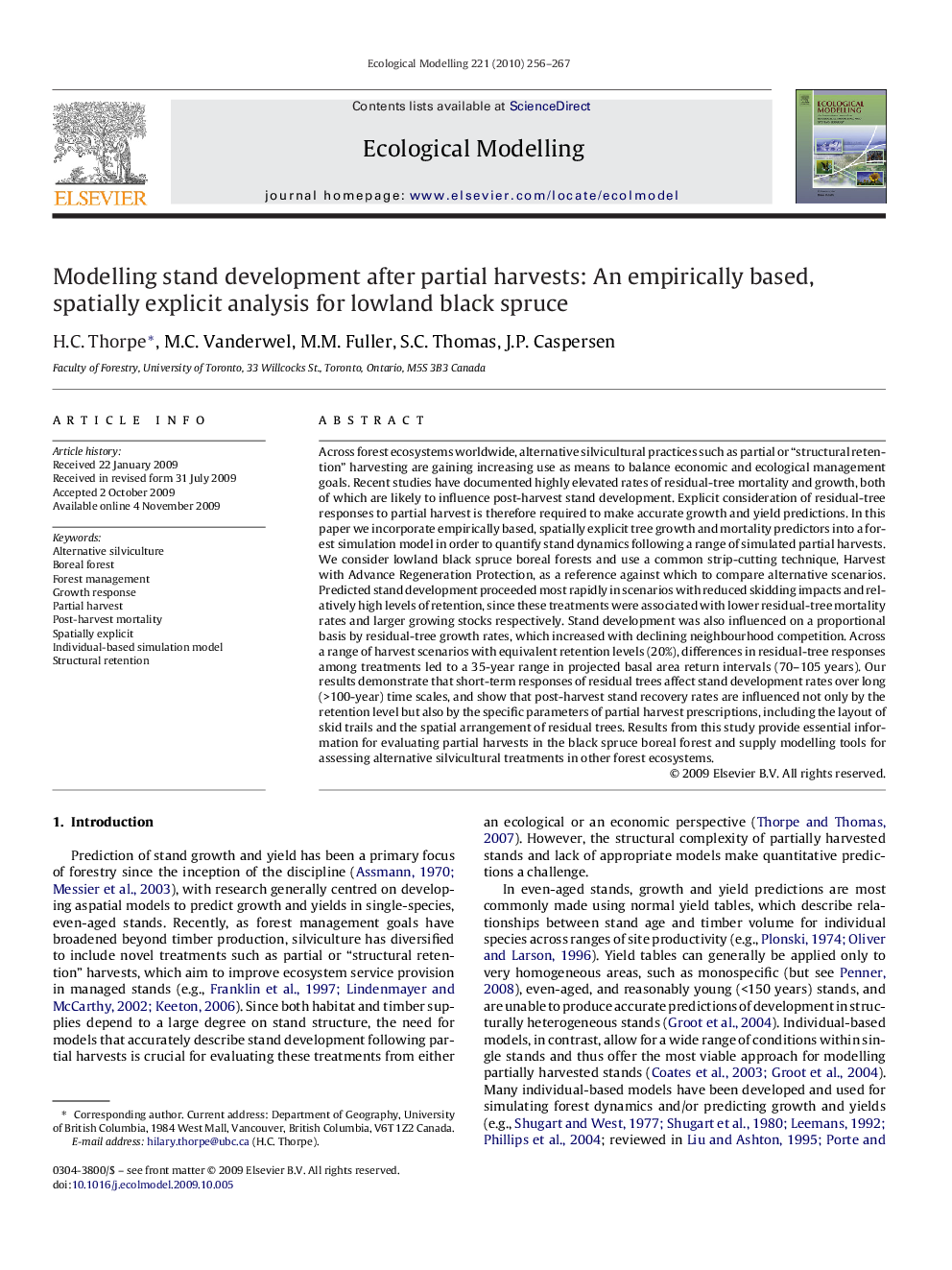| کد مقاله | کد نشریه | سال انتشار | مقاله انگلیسی | نسخه تمام متن |
|---|---|---|---|---|
| 4377489 | 1303431 | 2010 | 12 صفحه PDF | دانلود رایگان |

Across forest ecosystems worldwide, alternative silvicultural practices such as partial or “structural retention” harvesting are gaining increasing use as means to balance economic and ecological management goals. Recent studies have documented highly elevated rates of residual-tree mortality and growth, both of which are likely to influence post-harvest stand development. Explicit consideration of residual-tree responses to partial harvest is therefore required to make accurate growth and yield predictions. In this paper we incorporate empirically based, spatially explicit tree growth and mortality predictors into a forest simulation model in order to quantify stand dynamics following a range of simulated partial harvests. We consider lowland black spruce boreal forests and use a common strip-cutting technique, Harvest with Advance Regeneration Protection, as a reference against which to compare alternative scenarios. Predicted stand development proceeded most rapidly in scenarios with reduced skidding impacts and relatively high levels of retention, since these treatments were associated with lower residual-tree mortality rates and larger growing stocks respectively. Stand development was also influenced on a proportional basis by residual-tree growth rates, which increased with declining neighbourhood competition. Across a range of harvest scenarios with equivalent retention levels (20%), differences in residual-tree responses among treatments led to a 35-year range in projected basal area return intervals (70–105 years). Our results demonstrate that short-term responses of residual trees affect stand development rates over long (>100-year) time scales, and show that post-harvest stand recovery rates are influenced not only by the retention level but also by the specific parameters of partial harvest prescriptions, including the layout of skid trails and the spatial arrangement of residual trees. Results from this study provide essential information for evaluating partial harvests in the black spruce boreal forest and supply modelling tools for assessing alternative silvicultural treatments in other forest ecosystems.
Journal: Ecological Modelling - Volume 221, Issue 2, 24 January 2010, Pages 256–267